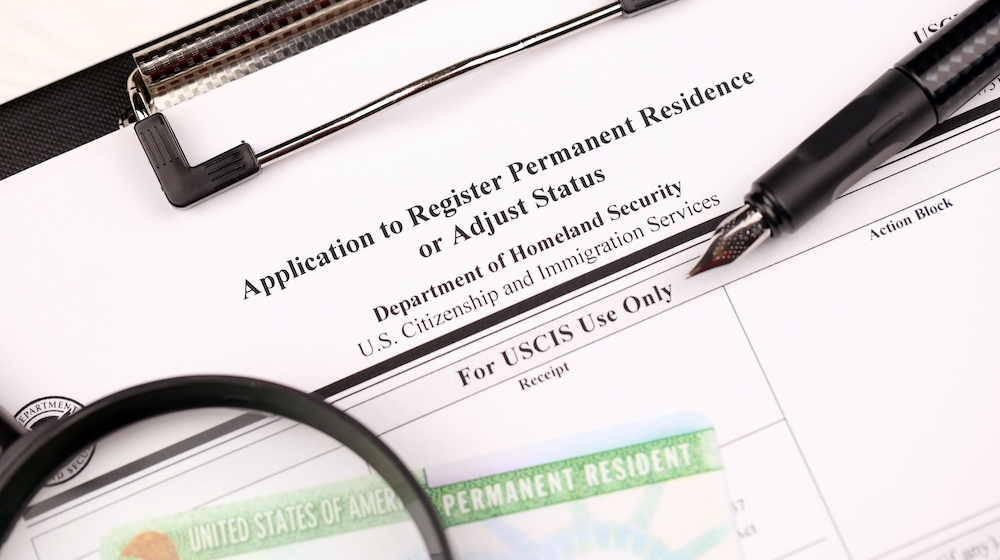For many around the world, the United States represents a beacon of opportunity, and obtaining a green card is often the first step in turning that hope into reality. However, the process of applying for a green card is known for its complexity. It involves multiple steps, rigorous paperwork, and an intricate timeline. Whether you’re a current immigrant, a job seeker, or someone contemplating the pursuit of a green card, this guide will break down the application process into manageable steps.

Step 1: Understanding Your Eligibility for a Green Card
The first and most crucial step in the green card application process is to understand your eligibility. The United States Citizenship and Immigration Services (USCIS) provides several pathways to obtain a green card, including family-based immigration, employment-based immigration, refugee or asylee status adjustment, and other specialized categories.
Family-Based Green Cards
Family-based immigration allows U.S. citizens and lawful permanent residents to sponsor certain relatives to come to the U.S. Immigrants eligible for a family-based green card usually secure their status through a relative who Acts as their Petitioner.
To apply for a Family-Based Green Card:
- The US Citizen or Legal resident sponsor files the appropriate immigrant petition with USCIS.
- If the USCIS approves the petition and a visa is available according to the Department of State’s visa bulletin, the next step will be to apply for the green card itself.
Employment-Based Green Cards
Employment-based visas are for those who seek to enter the US for employment, usually due to skills that are in short supply in the US labor market. There are various preference categories dependent on the type of work the immigrant will perform.
To apply for an Employment-Based Green Card:
- The U.S. employer files for an Immigrant Petition for Alien Worker (Form I-140) and has it approved by USCIS.
- The foreign national may then apply for permanent residency.
Refugee and Asylee Green Cards
Refugee status or asylum may be granted to people who have been persecuted or fear they will be persecuted on account of race, religion, nationality, and/or membership in a particular social group or political opinion.
To apply for a refugee or asylee green card:
- The refugee or asylee may apply for lawful permanent residence status one year after being granted refugee or asylee status.
- The application is filed on Form I-485.
The eligibility criteria can be complex, so it’s important to thoroughly research and potentially seek legal advice to understand which category applies to your situation.
Step 2: Filing the Immigrant Petition
After determining your eligibility, the next step is to file an immigrant petition. This is usually done by the sponsor or employer, depending on whether you’re applying through a family-based or employment-based category.
Family-Based Immigration
If you’re applying for a green card through a family member, your sponsor will file Form I-130, Petition for Alien Relative.
Employment-Based Immigration
If your green card application is employment-based, your prospective employer will file Form I-140, Immigrant Petition for Alien Worker.
The petition provides information about the sponsor, the beneficiary (the person seeking the green card), and their relationship or employment status. It is crucial to ensure that the form is filled out accurately and all required documentation is submitted.
Step 3: Green Card Application and Registration
Once your immigrant petition is approved, the next step is to apply for a green card. There are two primary methods for this – Adjustment of Status if you are located within the US, and Consular Processing if you are overseas.
Adjustment of Status
If you are in the United States, you can file Form I-485, Application to Register Permanent Residence or Adjust Status, with USCIS. This can often be done at the same time as Form I-130 or I-140, depending on your eligibility category.
Consular Processing
If you are outside the United States, you will go through Consular Processing, which involves applying for an immigrant visa through the State Department. Once approved, you can enter the U.S. and receive your green card.
Both processes require a significant amount of supporting documentation, including police certificates, medical examinations, and proof of financial support, as well as an interview with a USCIS officer or consular official. The complexity of this step cannot be overstated, and working with an immigration attorney can be invaluable.
Step 4: Preparing for Your Green Card Interview
For many applicants, an interview with USCIS is required to complete the process. The interview is an opportunity for the USCIS officer to verify the information provided, ensure that the applicant is eligible for a green card, and assess the applicant’s ability to support themselves financially.
What to Expect
The green card interview will typically involve a review of your application and an inquiry into your background, residency, and work history. You may also be asked to explain any discrepancies in your application or other issues that arise.
How to Prepare
To prepare for your green card interview, it’s important to:
- Review and understand all the information provided in your application.
- Gather all necessary documentation and evidence to support your application.
- Practice answering potential interview questions with someone who can help you improve your communication skills and manage nervousness.
- Familiarize yourself with the USCIS office where your interview will take place, including directions, parking, and any local procedures.
Step 5: Conditional Green Cards (For Some Applicants)
In some cases, a green card may be issued on a conditional basis. This usually applies to spouses of U.S. citizens and some investors. Conditional green card holders must apply to remove the conditions within the 90 days before the card expires.
To remove the conditions from a green card, you must file Form I-751, Petition to Remove Conditions on Residence. The purpose of this petition is to verify that the marriage is not fraudulent. You may also be required to attend an interview as part of this process.
Final Thoughts and Additional Resources
Applying for a green card is a significant and often life-changing endeavor. It’s not uncommon to feel overwhelmed by the process, but with careful planning and a clear understanding of each step, it can be navigated successfully.
For additional guidance, be sure to consult the USCIS website for the most updated forms and instructions. Additionally, consider seeking assistance from an immigration attorney or accredited representative, especially if your case is particularly complex. With the right support, you can make the dream of permanent residency in the United States a reality.
Remember to gather all relevant documents, such as birth certificates, any relevant criminal records, photos, and evidence supporting your eligibility. Engaging with communities and support groups can also help you stay informed and receive moral support throughout the process.
The green card application process not only requires time and patience but also a clear understanding of the necessary steps and paperwork. By breaking down the process into digestible segments and making use of additional resources, you ensure a more manageable and successful application.



